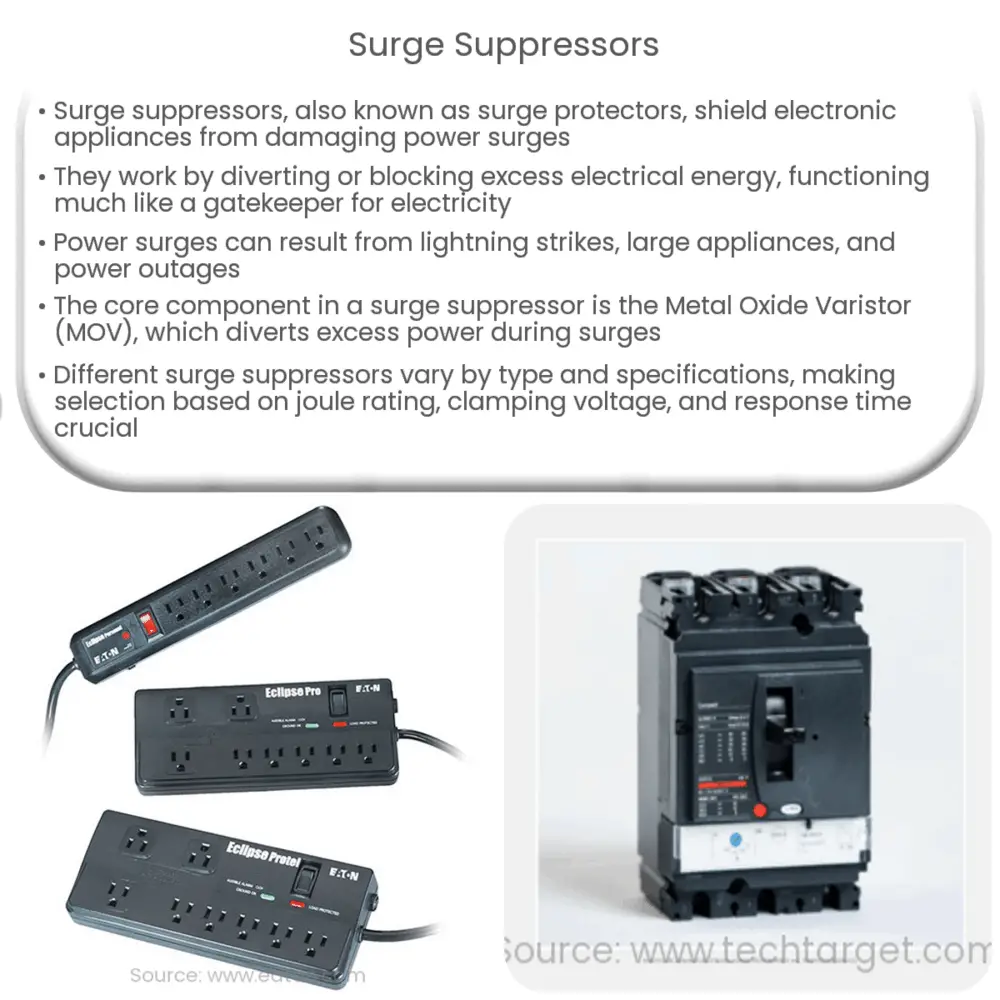Discover the crucial role of surge suppressors in protecting electronic devices, their types, and choosing tips for optimal safety.

Understanding Surge Suppressors
At the heart of modern day electronics lies a silent guardian that often goes unnoticed, a device commonly known as a ‘Surge Suppressor’. This device, also referred to as a surge protector, plays a crucial role in the safety and longevity of electronic appliances. Its main function is to shield these appliances from sudden ‘surges’ or ‘spikes’ in electrical power, which can otherwise cause severe damage.
The Role of Surge Suppressors
The essence of a surge suppressor lies in its capability to divert or block excessive electrical energy. Imagine a surge suppressor as a gatekeeper or a bouncer at a club, allowing only the correct amount of electricity to pass through and barring the rest. Such a device becomes essential considering the sensitive nature of electronic appliances which could easily be compromised due to power surges.
What Causes Power Surges?
- Lightning Strikes: Although rare, lightning strikes can cause powerful surges if they hit power lines connected to your home.
- Large appliances: Devices such as refrigerators and air conditioners can cause surges when they turn off, due to the sudden reduction in power demand.
- Power outages: When the power comes back on after an outage, it can cause a surge as all devices are turned on at once.
The Inner Workings of a Surge Suppressor
While a surge suppressor might seem like a complex device, its operation is based on a simple yet effective principle. The primary component of a surge suppressor is a component known as a Metal Oxide Varistor (MOV). The MOV acts as a pressure relief valve for electricity, diverting excess power away from the devices it’s protecting.
The MOV is connected between the power line and the ground line. Under normal voltage levels, the MOV remains non-conductive, allowing the power to pass through to the appliances. However, when a surge occurs, the MOV becomes conductive and shunts the excess power to the ground line, effectively protecting the connected devices.
Different Types of Surge Suppressors
There are different types of surge suppressors available in the market, each with its own specifications and purposes:
- Whole-House Surge Protectors: These are installed in the main electrical panel and protect all the appliances in the home.
- Power Strip Surge Protectors: These are portable devices that protect multiple appliances plugged into it.
- Uninterruptible Power Supply (UPS): In addition to surge protection, UPS devices also provide battery backup in the event of a power outage.
Choosing the Right Surge Suppressor
When choosing a surge suppressor, several factors come into play:
- Joule Rating: This indicates how much energy the suppressor can absorb. A higher joule rating signifies more protection.
- Clamping Voltage: This is the voltage at which the suppressor kicks in to divert excess power. A lower clamping voltage indicates a better performance.
- Response Time: This is the time it takes for the suppressor to respond to a surge. A lower response time is more desirable.
Importance of Surge Suppressors in Everyday Life
Given the ubiquity of electronic devices in our lives, the use of surge suppressors is increasingly critical. Not only can they prevent damage to expensive equipment, but they can also prevent potential electrical fires caused by power surges. In addition, considering the financial implications of replacing damaged appliances, a surge suppressor is a cost-effective preventive measure.
Conclusion
In conclusion, surge suppressors are an indispensable part of modern electronics. They offer a vital line of defense against power surges, ensuring the safety and longevity of your devices. When choosing a surge suppressor, remember to consider factors like joule rating, clamping voltage, and response time. With the right surge suppressor, you can protect your investments and ensure the safe operation of all your electronic devices.

